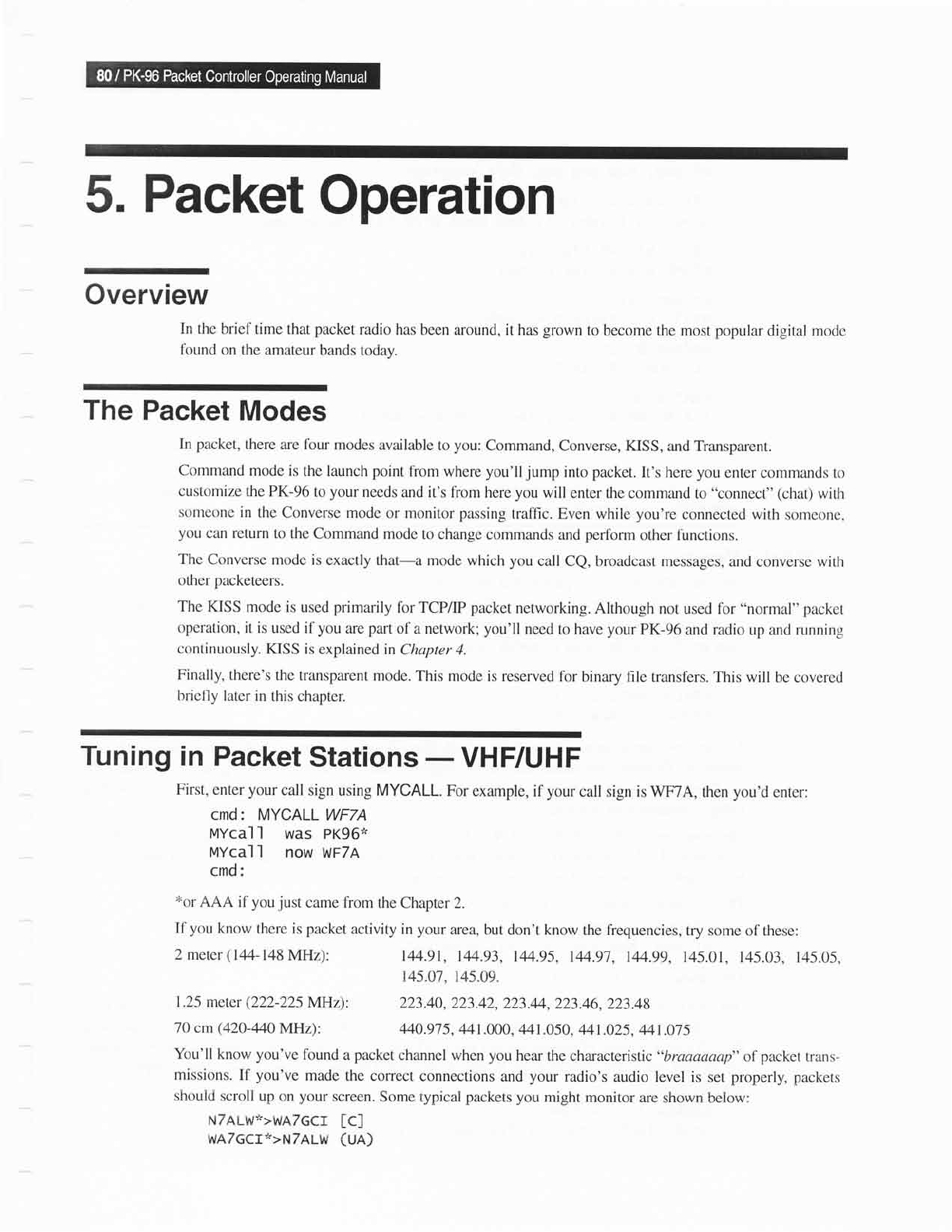Specifications
Table Of Contents

5.
Packet
Operation
Overview
In
the
brief time that
packet
radio
has been around,
it has
grown
to become the most
popular
digital mode
found
on the amateur
bands
today.
Tuning
in
Packet
Stations - VHF/UHF
2 meter
(144-148
MHz):
1.25
merer
(222-225
MHz):
1O cm
(420-440
MHz):
You'll
know you've
found
a
packet
channel when you
hear
the characteristic
"braaaaaap" of packet trans-
missions.
If
you've
made
the correct
connections
and
your
radio's
audio level is
set
properly, packets
should
scroll up
on
your
screen.
Some
typical
packets
you
might monitor
are shown
below;
I\i7ALW*>WATGCI
iC]
wATGcr*>N7nlw
(un)
First,
enter
your
call sign
using MYCALL.
For
example, if
your
call sign is WF7A,
then
you'd
enrer:
cmd: MYCALL
WFTA
tttycal
I
was
pK96r,
ltycal I
now
wrTR
cmd:
*or
AAA if
you
just
came from
the Chapter 2.
If
you
know there
is
packet
activity in
your
area,
but don't know
the frequencies,
try some of
these:
144.91, 144.93,
144.95,
144.91, 144.99,
145.01, 145.03,
145.05.
45.41, 145.09.
223.40,
223.42,
223.44, 223.46,
223.48
440.91
5,
zt4
1.000, 441.050,
441.025.
441.07
5
The
Packet
Modes
In
packet,
there
are four modes
available
to
you:
Command, Converse, KISS,
and Transparent.
Command
mode is
the launch
point
from where
you'll
jump
into
packet.
It's
here
you
enter
commands to
customize
the PK-96
to
your
needs
and it's fiom here
you
will enter
the command
to
"connect"
(chat)
with
solreone
in the
Converse mode
or monitor passing
traffic. Even while
you're
connected with
someone,
you
can return
to the
Command mode
to change
commands
and
perform
other functions.
The
Converse mode
is exactly
that-a mode
which
you
call CQ, broadcast messages,
and
converse with
other
packeteers.
The
KISS mode
is used
primarily
for
TCP/P
packet
networking.
Although not used
for
"normal"
packet
operation, it is
used if
you
are
part
of a network;
you'll
need to have
your
PK-96
and radio up and running
continuously.
KISS
is explained
in Chapter 4.
Finally,
there's
the transparent
mode. This
mode is
reserved fbr
binary flle
transfers. This will
be covered
briclly
later in
this chapter.










